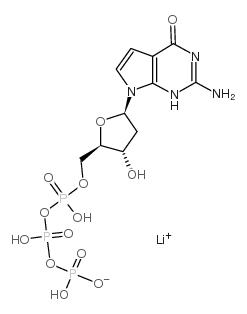The presence of telomere fusion in sporadic colon cancer independently of disease stage, TP53/KRAS mutation status, mean telomere length, and telomerase activity.
Hiromi Tanaka, Matthew J Beam, Kevin Caruana
Index: Neoplasia 16(10) , 814-23, (2014)
Full Text: HTML
Abstract
Defects in telomere maintenance can result in telomere fusions that likely play a causative role in carcinogenesis by promoting genomic instability. However, this proposition remains to be fully understood in human colon carcinogenesis. In the present study, the temporal sequence of telomere dysfunction dynamics was delineated by analyzing telomere fusion, telomere length, telomerase activity, hotspot mutations in KRAS or BRAF, and TP53 of tissue samples obtained from 18 colon cancer patients. Our results revealed that both the deficiency of p53 and the shortening of mean telomere length were not necessary for producing telomere fusions in colon tissue. In five cases, telomere fusion was observed even in tissue adjacent to cancerous lesions, suggesting that genomic instability is initiated in pathologically non-cancerous lesions. The extent of mean telomere attrition increased with lymph node invasiveness of tumors, implying that mean telomere shortening correlates with colon cancer progression. Telomerase activity was relatively higher in most cancer tissues containing mutation(s) in KRAS or BRAF and/or TP53 compared to those without these hotspot mutations, suggesting that telomerase could become fully active at the late stage of colon cancer development. Interestingly, the majority of telomere fusion junctions in colon cancer appeared to be a chromatid-type containing chromosome 7q or 12q. In sum, this meticulous correlative study not only highlights the concept that telomere fusion is present in the early stages of cancer regardless of TP53/KRAS mutation status, mean telomere length, and telomerase activity, but also provides additional insights targeting key telomere fusion junctions which may have significant implications for colon cancer diagnoses.
Related Compounds
| Structure | Name/CAS No. | Molecular Formula | Articles |
|---|---|---|---|
 |
7-Deaza-2′-deoxyguanosine 5′-triphosphate
CAS:101515-08-6 |
C11H16LiN4O13P3 |
|
Serotonin transporter (5-HTTLPR) and norepinephrine transpor...
2015-03-17 [Neurosci. Lett. 590 , 116-20, (2015)] |
|
5-HTTLPR genotype, asthma, diabetes and late-life depression...
2015-10-01 [Int. J. Geriatr. Psychiatry 30 , 1017-22, (2015)] |
|
Clinicopathologic report of ocular involvement in ALS patien...
2014-12-01 [Amyotroph. Lateral Scler. Frontotemporal Degener. 15(7-8) , 569-80, (2014)] |
|
The luminal progenitor compartment of the normal human mamma...
2013-01-01 [Stem Cell Reports 1 , 28-37, (2013)] |
|
The serotonin transporter genotype modulates the relationshi...
2014-12-01 [Bipolar Disord. 16(8) , 857-66, (2014)] |